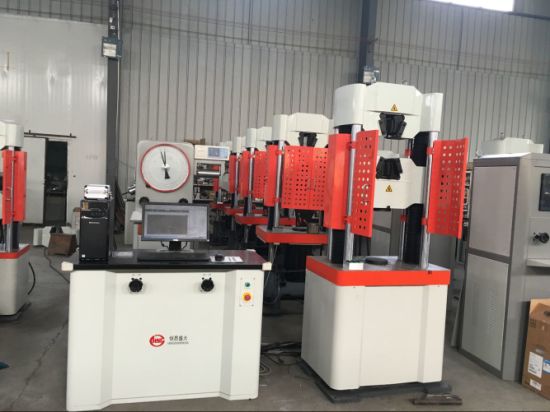Tensile testing of steel pipe
Tensile strength is one of the most important mechanical properties of steel pipes. The tensile test of a steel pipe is a test method for measuring the characteristics of the steel pipe under axial tensile load.
The purpose of the steel pipe tensile test is to determine the elastic limit, elongation, elastic modulus, proportional limit, area reduction, tensile strength, yield point, yield strength, and other tensile properties of the steel pipe.
Tensile test of Steel Pipe
Steel Pipe Tensile Test Tests for a series of characteristics of steel pipes under tensile load are also called tensile tests. It is one of the basic methods for testing the mechanical properties of materials and is mainly used to test whether the steel tubes meet the required standards.
When the steel tube is subjected to tensile load, the phenomenon of obvious plastic deformation continues to occur when the load does not increase is called yield. The stress at yield is called the yield point or the physical yield strength, expressed as σS (Pa). There are many materials in the project without obvious yield point. Usually, the residual plastic deformation of the material is 0.2% as the yield strength, and the conditional yield limit or the condition yield strength is expressed as σ0.2. The maximum stress value reached before the fracture of the steel pipe, called the tensile strength or strength limit, is expressed in σb (Pa).
Steel tube plasticity refers to the ability of a steel tube to undergo plastic deformation under load without causing damage. Commonly used plasticity indexes are elongation and area shrinkage. Elongation, also called elongation, is the percentage of the ratio of the total elongation to the original length after a steel pipe specimen is broken by a tensile load, denoted by δ. The reduction of area refers to the percentage of the ratio of the area of reduction of the section of the steel pipe to the area of the original section after being broken by the tensile load. It is expressed by ψ.
The conditional yield limit σ0.2, the strength limit σb, the elongation δ, and the area shrinkage ψ are the four performance criteria that are often determined in tensile tests. In addition, the elastic modulus E, proportional limit σp, elastic limit σe, etc. of the steel pipe can also be measured.
The tensile test was performed on a steel pipe tester. Test machines are of the mechanical, hydraulic, electrohydraulic or electronic servo type. The sample type can be a full-section material, or can be processed into a round or rectangular standard sample. Some physical samples, such as steel bars and wire rods, generally do not need to be processed to maintain their full sections for testing. Sample preparation should avoid the influence of cold and hot processing on the material structure and guarantee a certain degree of finish.
During the test, the tester stretches the sample evenly at a specified rate, and the tester can automatically draw a tensile curve. For materials with good plasticity such as low-carbon steel pipes, when the sample is stretched to the yield point, there is a significant jitter in the force indicator, and the upper and lower yield points (and) can be separated. In the calculation, the δ and the material are often taken. ψ The test specimens after fracture can be assembled and measured for elongation and reduction in cross section.

Steel tube tensile strength calculation formula
In the tensile test, the maximum tensile stress to which the sample is subjected to breaking is the tensile strength, and the result is expressed in MPa.
(1) When using the instrument to test the tensile strength of the sample, data such as tensile stress at break, tensile yield stress, and elongation at break can be obtained.
(2) Calculation of tensile strength:
Σt = p / (b×d)
In the formula, σt is the tensile strength (MPa); p is the maximum load (N); b is the sample width (mm); d is the sample thickness (mm).
Note: The area used for the calculation is the original cross-sectional area of the specimen at the fracture, not the cross-sectional area of the fractured port.
